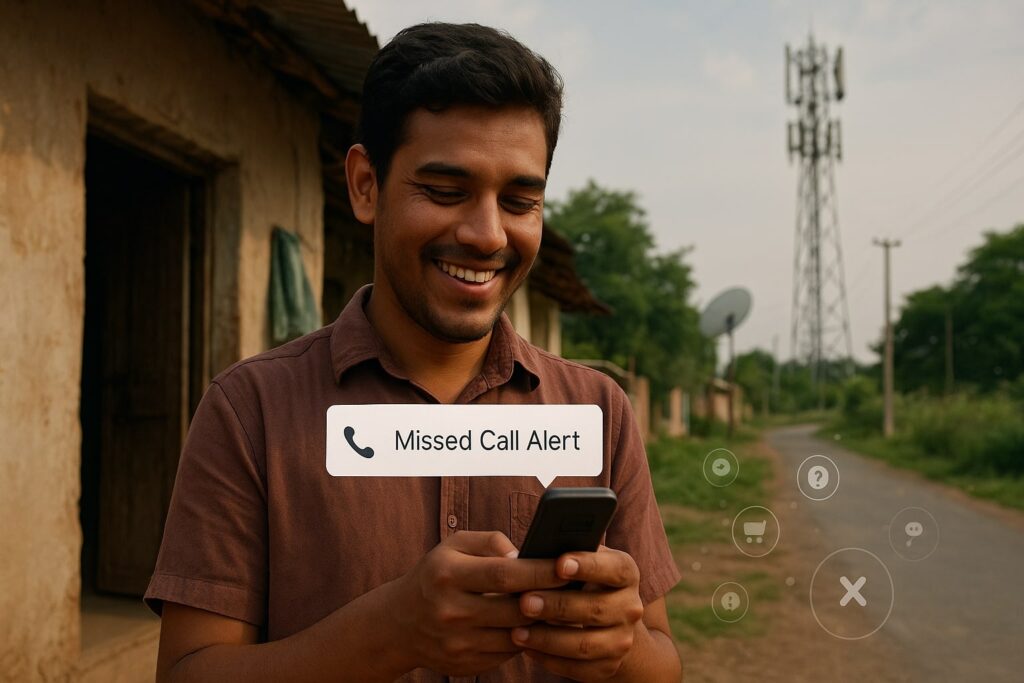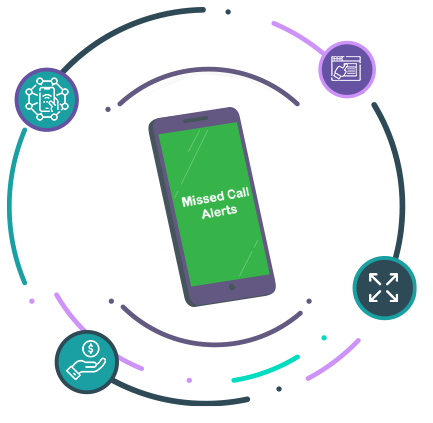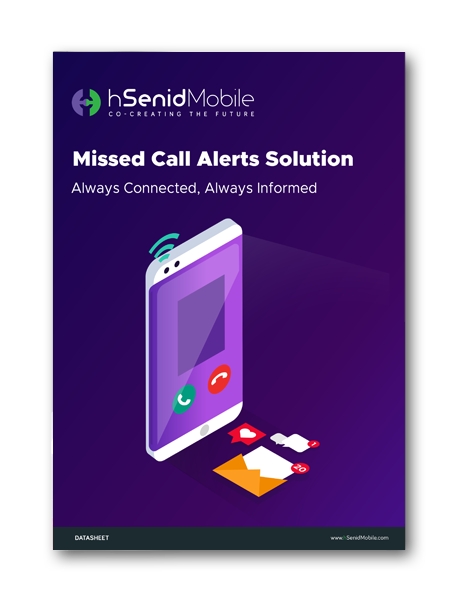In today’s tech-focused telecom environment, buzzwords like 5G, AI, and cloud-native dominate the conversation. But beneath the surface, in regions where connectivity remains inconsistent, one simple tool continues to quietly deliver value: MCA, or Missed Call Alert.
While many consider missed calls a dated feature, the reality is far from it. In low-bandwidth markets, where internet access is limited, devices are basic, and mobile data remains expensive, the missed call alert plays a critical role in keeping people and services connected.
So why does MCA continue to shine where bandwidth is scarce? Let’s explore how this humble missed call service remains a hero in challenging environments.
This makes mobile voice services—especially simple GSM-based ones like call notifications and SMS—absolutely essential. In such regions, when a call can’t go through due to poor signal or switched-off phones, a missed call alert ensures that no opportunity for communication is lost.
More than a basic notification, this service becomes a vital bridge between caller intent and recipient availability. It helps ensure continuity in both personal and professional communication, especially where mobile data is unreliable.
This behavior shows how deeply embedded the missed call service is in daily life. It’s not just about catching up on lost calls—it’s a part of how people communicate and coordinate in low-bandwidth economies.
Additionally, MCA can be integrated with customer data platforms (CDPs) to enhance segmentation and communication timing. In the future, the humble MCA may even evolve into a hybrid between notification engine and engagement platform.
It ensures people stay reachable, that businesses don’t lose touch, and that telcos continue to deliver meaningful value—no matter the bandwidth limitations.
To discover how your telecom network can deliver a robust, modern missed call alert experience tailored for low-bandwidth environments, visit our website and explore MCA solutions trusted across emerging markets.
While many consider missed calls a dated feature, the reality is far from it. In low-bandwidth markets, where internet access is limited, devices are basic, and mobile data remains expensive, the missed call alert plays a critical role in keeping people and services connected.
So why does MCA continue to shine where bandwidth is scarce? Let’s explore how this humble missed call service remains a hero in challenging environments.
Low-Bandwidth Doesn’t Mean Low Communication
Mobile penetration is on the rise globally, but network quality and internet speed are still uneven. In parts of South Asia, Sub-Saharan Africa, and rural Latin America, many users operate on 2G or 3G networks. According to GSMA, over 3 billion people worldwide still face significant barriers to accessing fast mobile internet.This makes mobile voice services—especially simple GSM-based ones like call notifications and SMS—absolutely essential. In such regions, when a call can’t go through due to poor signal or switched-off phones, a missed call alert ensures that no opportunity for communication is lost.
What Is a Missed Call Alert?
A missed call alert is a system-generated message, typically delivered via SMS, that informs a mobile user of a missed incoming call while their phone was unavailable. Whether the device was turned off, in airplane mode, or out of coverage, this alert ensures users are aware someone tried to reach them.More than a basic notification, this service becomes a vital bridge between caller intent and recipient availability. It helps ensure continuity in both personal and professional communication, especially where mobile data is unreliable.
Why MCA Works Perfectly in Low-Bandwidth Markets
- No Internet Needed
Unlike OTT apps that rely on data connectivity, a missed call service operates over traditional signaling and messaging channels. This means users with basic feature phones or limited access to mobile data can still receive timely alerts. It works even when internet-based applications like WhatsApp or email cannot function, making it a vital part of the low-bandwidth communication toolbox. - Works on Any Device
Whether someone is using a smartphone or a basic keypad phone, the MCA doesn’t discriminate. It is accessible, familiar, and doesn’t require technical knowledge to activate or use. This universality makes it ideal for regions with device fragmentation, where not everyone can afford or use high-end mobile phones. - Minimal Network Load
From the operator’s perspective, MCA services are lightweight. They consume very little bandwidth, rely on established core network infrastructure, and are easily scalable. Telcos can offer missed call SMS alerts even during peak hours without congesting the network. This efficiency becomes crucial in areas where network resources are already under pressure.
Missed Calls: More Than Just Missed Connections
In many emerging markets, missed calls are used intentionally. For instance:- A quick ring signals, “call me back.”
- Two missed calls mean, “I’m waiting outside.”
- Businesses even use them as opt-in signals or lead generation tools.
This behavior shows how deeply embedded the missed call service is in daily life. It’s not just about catching up on lost calls—it’s a part of how people communicate and coordinate in low-bandwidth economies.
Real-World Use Cases Where MCA Is a Game Changer
- Rural Healthcare and Emergencies: In areas where medical services are limited, missed calls can serve as appointment requests or emergency indicators. MCA ensures the patient knows when a doctor or clinic tried to reach out, even if they were unreachable at the time.
- Delivery and Logistics: Drivers often face dropped calls due to poor coverage in rural zones. A call notification ensures the recipient knows an attempt was made, and that they can return the call or send instructions once signal is restored.
- Field Workforce Management: Field agents in remote locations can use missed calls to signal task completions, trigger follow-ups, or notify their managers—without needing mobile data or voice airtime.
- Educational Services: Many NGOs and educational platforms use missed call SMS services to deliver class schedules, offer information, or register participants in low-connectivity zones.
Why Telcos Still Win with MCA
- Enhanced Customer Retention: Ensuring users receive communication—even when temporarily unreachable—builds trust and satisfaction.
- Monetization Opportunities: MCA can be bundled with value-added services like voicemail, personalized greetings, or intelligent call forwarding.
- Low Operational Cost: Once deployed, MCA solutions run on existing infrastructure, requiring minimal updates and maintenance.
- Cross-Sell Enablement: Operators can use MCA services to push offers, reminders, or even re-engagement nudges in the form of smart alerts.
Evolving MCA for 2025 and Beyond
Modern MCA platforms aren’t static. New-age systems offer smart personalization, user preferences, and even AI-generated follow-up suggestions. Alerts can now be delivered over multiple channels—SMS, USSD, push notifications, or even in-app chat.Additionally, MCA can be integrated with customer data platforms (CDPs) to enhance segmentation and communication timing. In the future, the humble MCA may even evolve into a hybrid between notification engine and engagement platform.
Conclusion: The Hero We Still Need
In a world obsessed with speed, data, and digital transformation, it’s easy to overlook foundational technologies that quietly keep things running. The MCA is one of them. For users navigating patchy signal, limited budgets, or low-end devices, MCA isn’t just helpful—it’s vital.It ensures people stay reachable, that businesses don’t lose touch, and that telcos continue to deliver meaningful value—no matter the bandwidth limitations.
To discover how your telecom network can deliver a robust, modern missed call alert experience tailored for low-bandwidth environments, visit our website and explore MCA solutions trusted across emerging markets.








